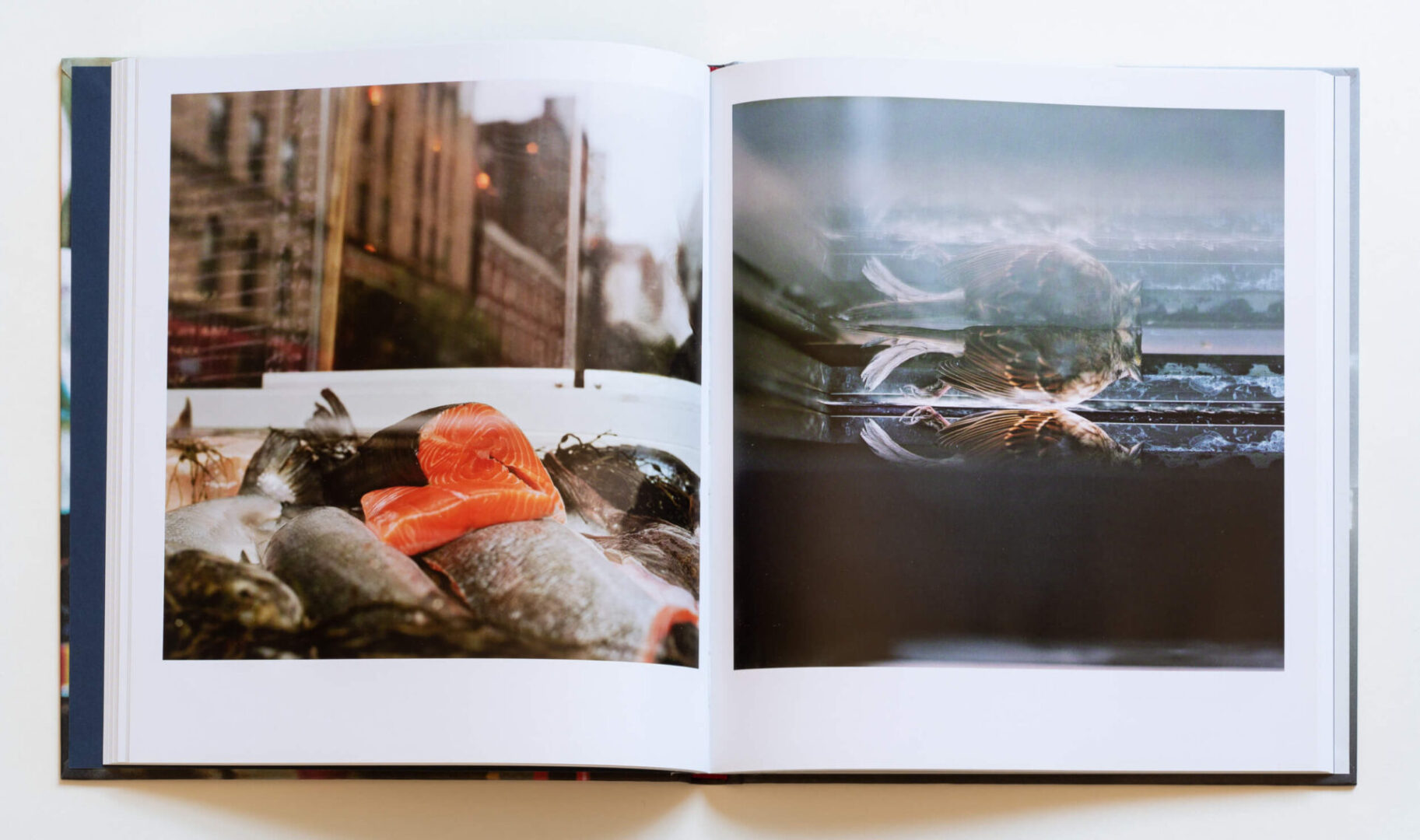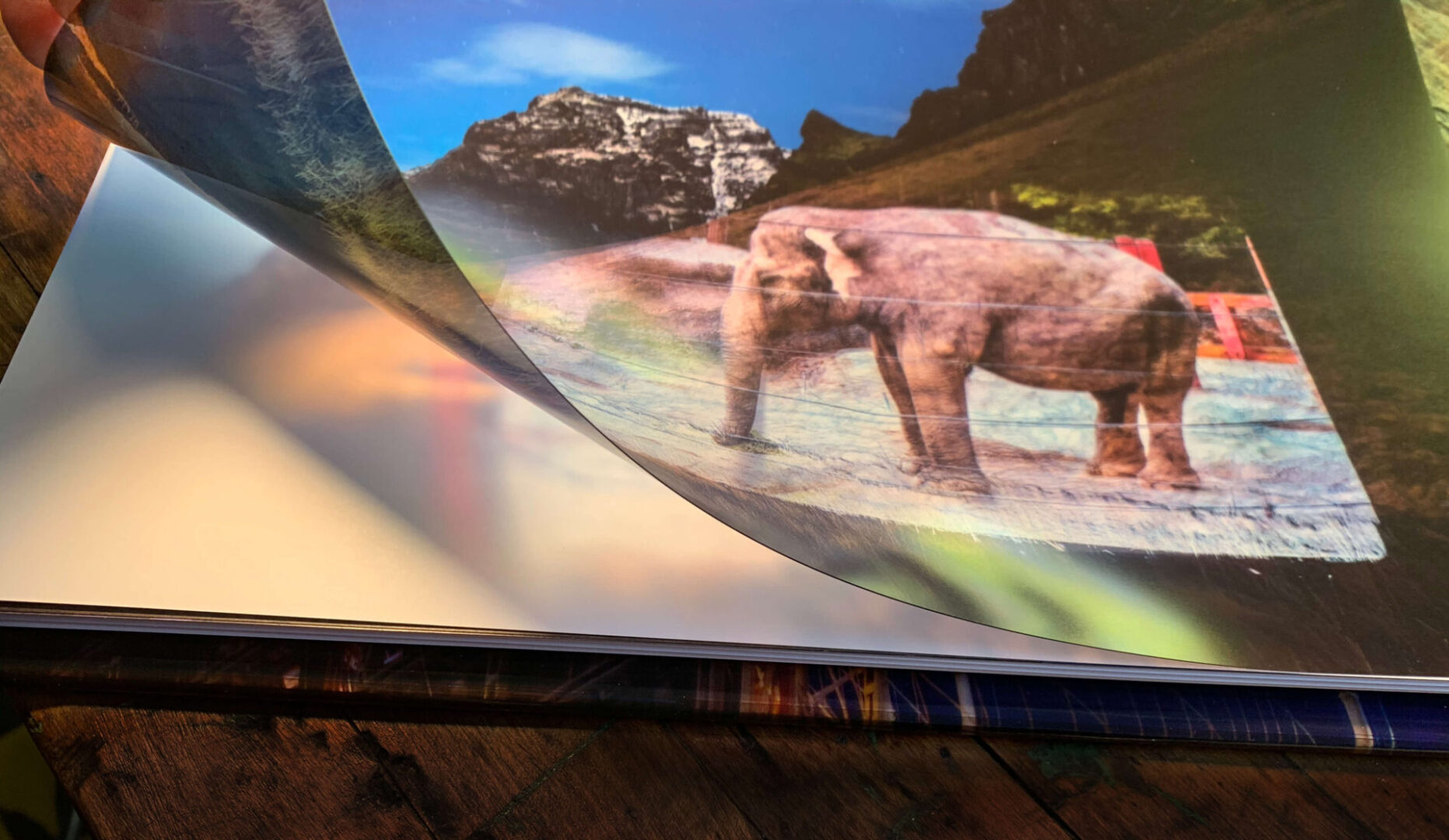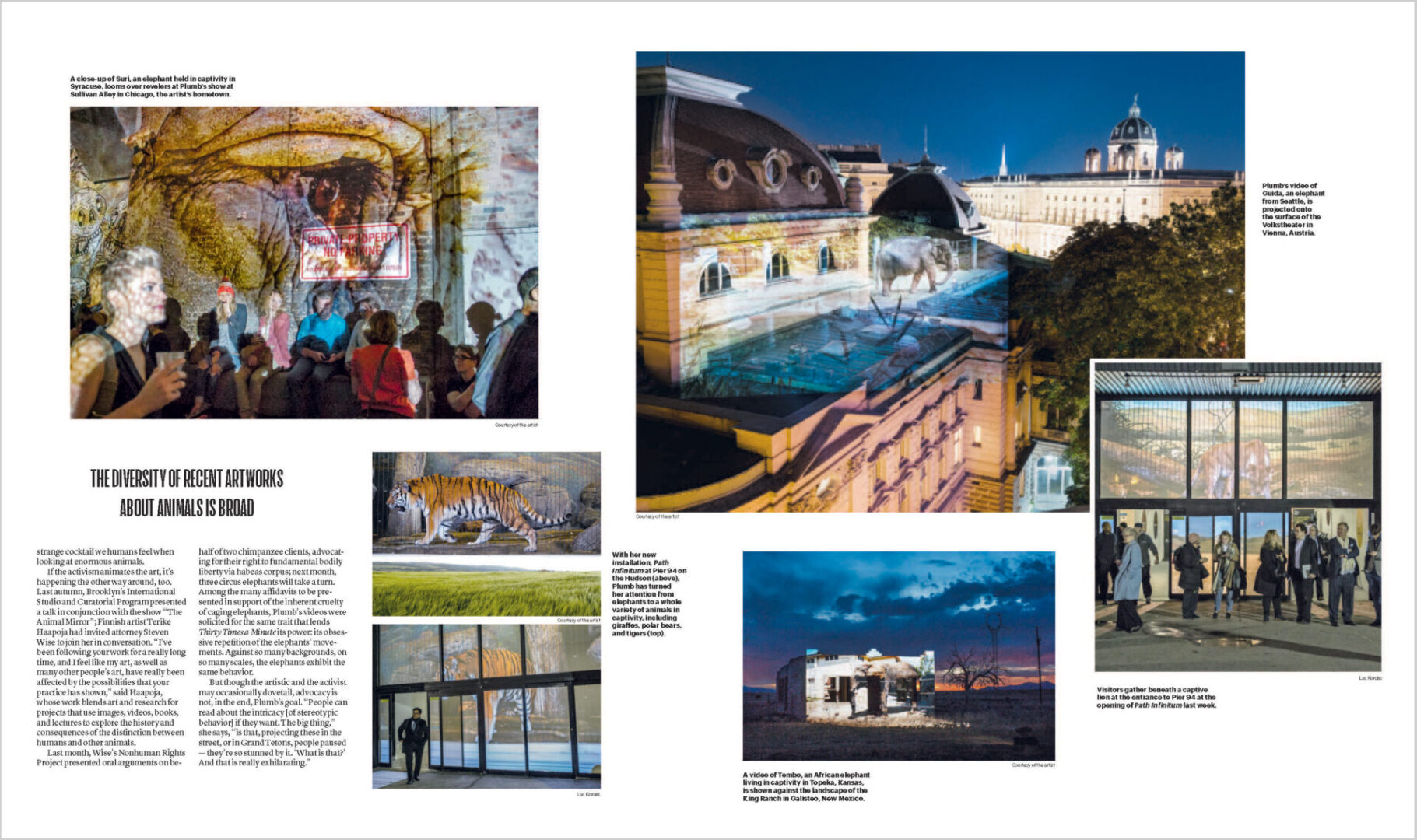SELECTED PUBLICATIONS
ANIMALS ARE OUTSIDE TODAY
Published by Radius Books, 2011
Photographs by Colleen Plumb
Essay by Lisa Hostetler, Curator-in-Charge, George Eastman Museum
Hardbound / 9 x 10 inches / 128 pages / 65 images


“Plumb has turned her lens not only on living animals but also on those which are (among other things) dead, stuffed, painted, drawn, plucked, slaughtered, roasted, euthanized, and caged, all of which appear in this book.
Whether behind fences, in a bag or a box, a frame or a jar, many of these animals are separated from humans by a literal divide. On a symbolic level, this separation between humans and nature runs contrary to animism -- the notion that animals (among other things) contain spirits or souls -- but is consistent with the disassociation from nature prevalent in Western culture. At the same time, however, many of the animals in Plumb’s photographs are not separated from the viewer; in some cases, they are (or seem) very near, as in Mouse with Fly, in which a fly perches on a dead mouse, seen in close but with soft focus. In exactly what ways are these animals outside today? And outside of what?
There is no one answer here. In Plumb’s photographs there are variations in perspective, sharpness, depth of field, emotional tone, and distance from the subject; if there is a common thread it is that the view is often unexpected, as is the way she crops the images. For example, Field Museum Sue shows only part of the tail of the largest, most complete Tyrannosaurus Rex in the world. Photographed from below, these bones are dwarfed by the light shining through the checkerboard of windows in the ceiling above the enormous room in which Sue is displayed. That pattern is echoed on the facing page in what is apparently the roof of a cage holding a baby alligator. Not only do we connect the two creatures because of the similarity of the shapes of their tails, but we also see them both as specimens, something collected and preserved in order to be observed. (Interestingly, the word “specimens” comes from the Latin word specere, meaning to look at.) More generally, the sequencing of the images creates the kind of conversation between photographs that happens best in book form; the trim size, paper, layout, and text likewise work well together.
Perhaps the most important question here has to do with death. We cannot possibly escape death in the pages of this book which opens with a Gary Snyder poem titled, Two Fawns That Didn’t See the Light of Spring and contains numerous photographs of dead animals. But Burying Jack and Euthanized take us to the heart of the matter. In the former, a little girl stands next to a plain wooden box that is clearly the coffin for a dog named Jack; in the latter, a man and dog (Jack, perhaps?), viewed from far above (from heaven?), lie side by side on a red blanket under a shade tree. From this perspective, it is impossible to know (except conceptually) whether it is the man who is dead or the dog, or both. In this way, in that we humans, like animals, are subject to death, there is no separation between us; we all eventually turn to dust.
Plumb’s work is not (thank goodness) merely a polemic against cruelty to animals (although I suspect animal rights’ activists may see it this way). Although we can infer some of Plumb’s ideas about the way animals exist in today’s world, these photographs are less about ideas than about her personal way of seeing animals and of seeing us seeing and depicting animals.”
- Ellen Rennard, Photo-Eye book review
THIRTY TIMES A MINUTE
Published by Radius Books, 2020
Photography by Colleen Plumb. Texts by Marc Bekoff, Julia Cooke, Catherine Doyle, Hope Ferdowsian, M.D., Linda Hogan, Les O’Brien, Joyce Poole & Peter Granli, Steven M. Wise, Mandy-Suzanne Wong.
Hardcover / 9.25 x 13.5 inches / 58 images / 220 pages




Seeing Sight Unseen (excerpt), from Minding Nature Journal
By Radhika Subramaniam, Associate Professor of Visual Culture at Parsons | The New School:
“Plumb edited her footage into a short video of about ten minutes that shows elephant after elephant shifting and swaying in their different enclosures. Between 2014 and 2019, she projected this video onto a variety of largely urban or peri-urban surfaces—walls, building facades, roofs, storefronts, even vegetation—in many parts of the United States and Europe. Plumb claims that some elephant handlers tell spectators that elephants must sway because they doze while standing and that the rhythm is calibrated to their heartbeat of thirty times a minute—hence the title of the video as well as the publication that is a record of this peripatetic art project. Even as we are in a glut of visual consumption, species are going extinct due to environmental degradation, habitat loss, and human encroachment.
The handsome book is published by Radius, a Santa Fe-based publisher with an admirable commitment to art books. It is large in format (9.25” x 13.5”), wire bound, with a coated plastic dust jacket giving it the impression of a binder or a report—un-conventional for an artist book but in keeping with the activist spirit of the project. This is indeed a report—a prison psychiatric photographer’s report for sixty-five Asian and African elephants that includes a terse biographical record covering birth, death, capture, and transfers and is supported by expert testimony. The fifty-eight substantial photographs in the book document the spectral appearance of the elephants in different locations, each one flickering into view in the dark night.
In these images, we meet the pixelated ghosts of Alice, Billy, Bamboo, Hanako, Happy, Lily, Mikki, Maggie, Patience, Raja, Rene (M’Bili), Sneezy, Suki, Surapa, Tembo, Viola, and many others, each with their own story—most “wild-caught,” the occasional “captive-born,” but each with a record of sentences in different zoos, including at times in solitary confinement, denied the companionship of a fellow elephant. Jenny towers above the yellow signage of a Brooklyn bodega with an energetic mural on its walls. She died in 2017 and was filmed giving rides to children in Indiana. Doc, who has never known a life outside circuses and zoos, lights up the side of a small building in Iceland. The metal bars and sandy earth of his enclosure glow like a hearth in the bleak wintry landscape. Rex’s long trunk and legs are topped by the just discernible peaks of the Grand Tetons. Tembo, from Dresden Zoo, fills the ornate tiled arches of Central Park’s Bethesda Terrace. Each incongruous juxtaposition tries to resist an attempt to make meaning—no elephant is being returned to an imagined natural location, nor can the viewer fully indulge in high-resolution voyeurism.”
SPELLS
Published by Counterpoint, Berkeley
Written by Peter Rock, Photography by Sophia Borazanian, Sara Lafleur-Vetter, Peter McCollough, Shaena Mallett, Colleen Plumb
Softcover / 8.5 x 9.75 inches / 160 pages
“The images are not merely illustrations for a pre-existent story, then, but the conditions and possibilities and limitations of how they proceeded. The images came first. One way to think of it is that the stories herein, and the larger story they become, were already embedded in the photographs. My attention and intuition acted as a kind of excavation that brought them to the surface, into words.” – Peter Rock
The texts range from narrative to prose poem, from folktale to rant to reverie to an essay written by a fourth grader. The overarching story follows three friends who have recently graduated from high school; it explores their relationships and how things change when they become entangled with an elderly widower who claims to have dreamt of one of them. The ensuing drama explores the relationship between dreams and waking life, between the head and the heart, between shadows and their bodies, between the living and the dead.

BLOW Photo, Dublin
Issue 9 / Animals
simone bergantini / lisa strömbeck / ruth van beek / jason demarte / sandra birke / simen johan / kimberly witham / colleen plumb / giacomo brunelli / rebecca norris webb / martin usborne / anne berry / eric pillot / annie marie musselman / richard barnes / magda hueckel
38 × 29cm / 52 pages / paper: edixion challenger

VILLAGE VOICE, New York
The Celluloid Menagerie: How Colleen Plumb uses her art to highlight the plight of animals in captivity
by Julia Cooke
April 5, 2017 / Print Issue
VIRGINIA QUARTERLY REVIEW
A National Journal of Literature & Discussion
Center for Media and Citizenship at the University of Virginia, published quarterly in Charlottesville, Virginia
Paul Reyes, Editor
Thirty Times a Minute, Written by Julia Cooke, Photography by Colleen Plumb
Summer 2016 / Volume 92 / #3






